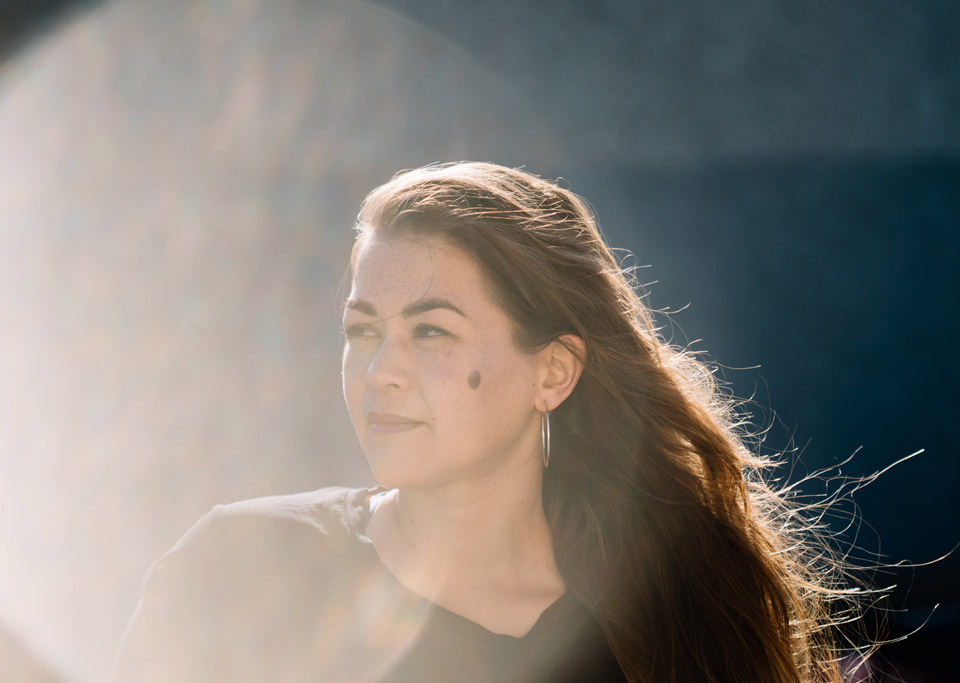-

What do you do?
50% of my work is illustration, so I mostly do lettering design and illustrated typography. That could be anything from logos to posters or headers for websites. The rest of the time I paint murals.
Have you always been interested in being a designer?
I was always interested in art, so when I was a little kid my favourite thing to do was to draw playgrounds.
I was really drawn between dance college and art college. The thought of going to art college was good, that you'd spend all your time painting and drawing and learning about things.
I went to NCAD, the National College of Art and Design in 2000.
Did you have much information in school from teachers about choices?
In the 1990s, Leaving Cert Art wasn't that good as a subject… we drew a lot of peppers.
What did you study in NCAD?
I studied fine art and we used to slag off the designers and say 'oh you're going to get a job and sell-out'. Now, I really wish I did design.
Choosing art as a way of life, or design as a way of life is difficult. It involves a lot of self-belief but I think if you just keep going and keep doing it, that will build.
What did you do next?
When I left NCAD it was 2004. I worked in a lot of restaurants. I couldn't make the bad video art I had been making… so I started painting again.
I spent 7 years as a painter. I had residencies and exhibitions in Singapore, London, Dublin and Berlin.
In 2011 and I decided I wanted to make money or a living out of artwork, which I hadn't previously managed to do. So I decided to be an illustrator.
Then I went back to study animation in Ballyfermot which was really great.
What type of animation was it?
In Ballyfermot, they teach classical animation, that's hand-drawn and also computer animation. I wasn't very good at either of them.
With illustration, you can spend two days on one animation, but for animation, you're doing a thousand drawings, especially if it's hand-drawn and just the volume of work is crazy.
Do or did you have any female role models?
Mostly the contemporaries that I meet through work now. Vanessa Power of Signs of Power. She's a sign-painter.
Jess Tobin, who is a street-artist called Novice. She helped me an awful lot, showing me how to use spray cans.
I'm in a street-art collective called The Mna Collective and that's a lot of women who use spray-paint. It's just a lovely community.
Are there many women in spray-painting?
There are about 10 who use spray paint and a lot of them are older. I only started using spray paint when I was 35.
I would have been scared to start spray painting before I was a bit older because I just didn't think it was something girls did. Nobody told me that, I just assumed.
What made you start using spray paint?
At least for me, it's ego. It's seeing your work which is normally on a small screen, but really big and really colourful.
There's no ctrl+z on your hand. There's a bit of an adrenaline rush that comes afterwards and you're like 'I did this, it's huge!'.
What about your mural at Eastwall?
My friends Tara and Rowan own East Road Cafe and they contacted me and the council to coordinate some kind of mural. When I do large jobs, I try to take interns or encourage younger girls to help me and use spray paint. Sophie and Rebecca from Eastwall Community Centre came and helped me that day and we got it done in a whole day.
Tell me about your illustration
I'm slightly obsessed with lettering and typography.
When you draw a letter or a word, it works on two levels. It's what the meaning of the word is, and how it's drawn.
So let's say I drew the word power-drill in a really scriptey-fancy font or typeface, then it would have a different meaning than if it was in a blocky sans serif.
It's about communication and how you set the tone. It's a little bit like music, you're creating a tone and a vibe through the drawing and illustration of letters.
How did you set up your business today and become a street artist?
When I left Ballyfermot I couldn't get a job in an animation studio and I couldn't get any studio experience because my animation was pretty bad. I thought the best thing to do was to set up a business and become freelance.
Setting up a business is really terrifying and it takes a lot of energy and the first couple of years, I definitely worked 6 or 7 days a week. At the start, I was pretty much taking anything I could get.
When you work for yourself, you only get paid if you work and it made me say yes to things that I wouldn't have done otherwise. It was actually a really good learning experience.
I love being freelance. I love not having to be in an office at a certain time but I really like what I do, so the temptation to work all the time is there.
What challenges have you faced?
The hardest thing I've found was believing in myself.
Imposter syndrome is absolutely real. I still get that a little bit but I try and quash it down.
Where do you see yourself in the future?
I really enjoy working and I enjoy what I do a lot, so I'm pretty happy doing it.
Any advice for your 16-year-old self?
One - don't work too hard. But if you don't work too hard, you won't get anywhere, so maybe work just a little bit more than average.
Advice for teenagers who might want to do this?
Choosing art as a way of life, or design as a way of life is difficult. It involves a lot of self-belief but I think if you just keep going and keep doing it, that will build.








